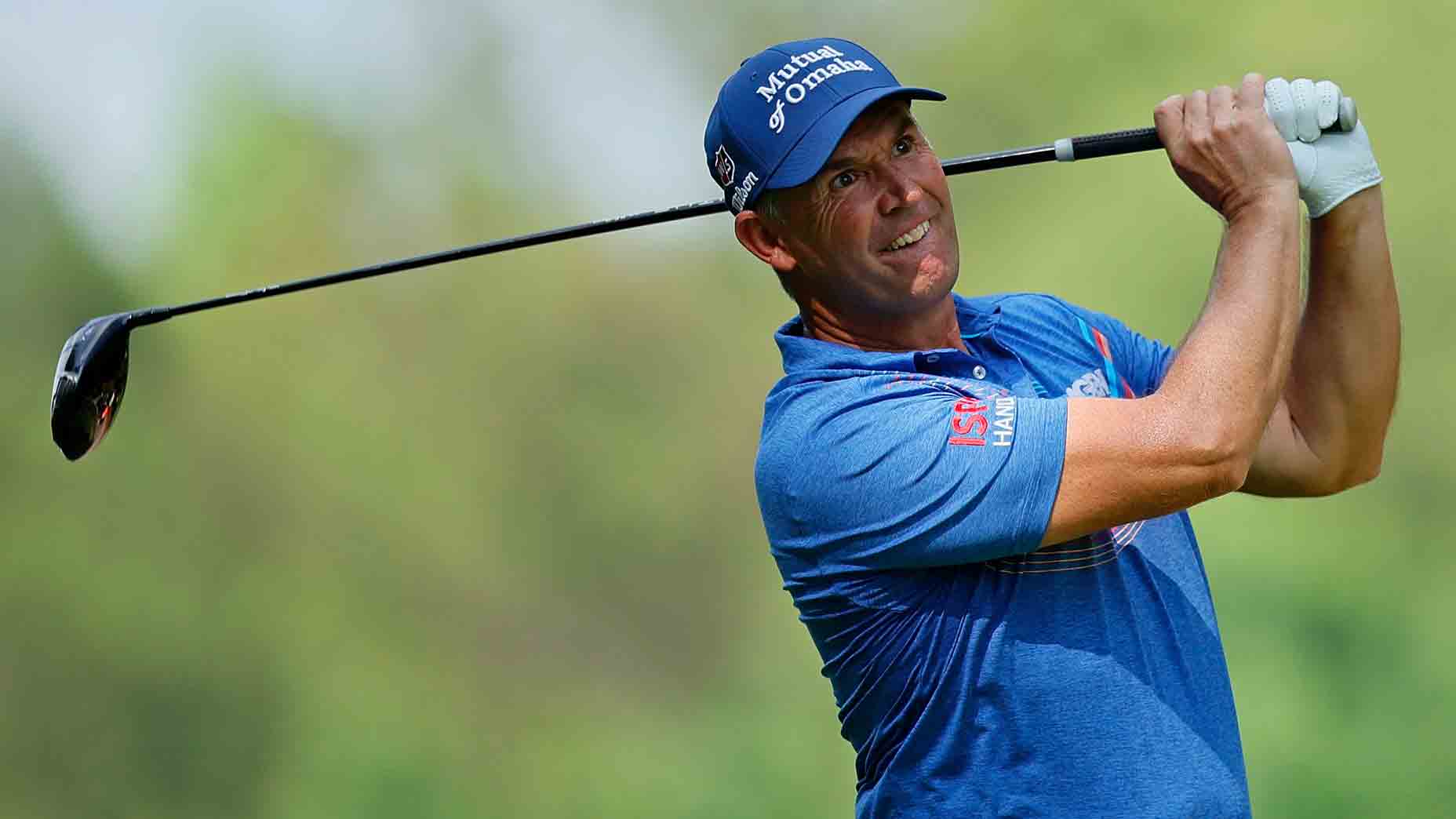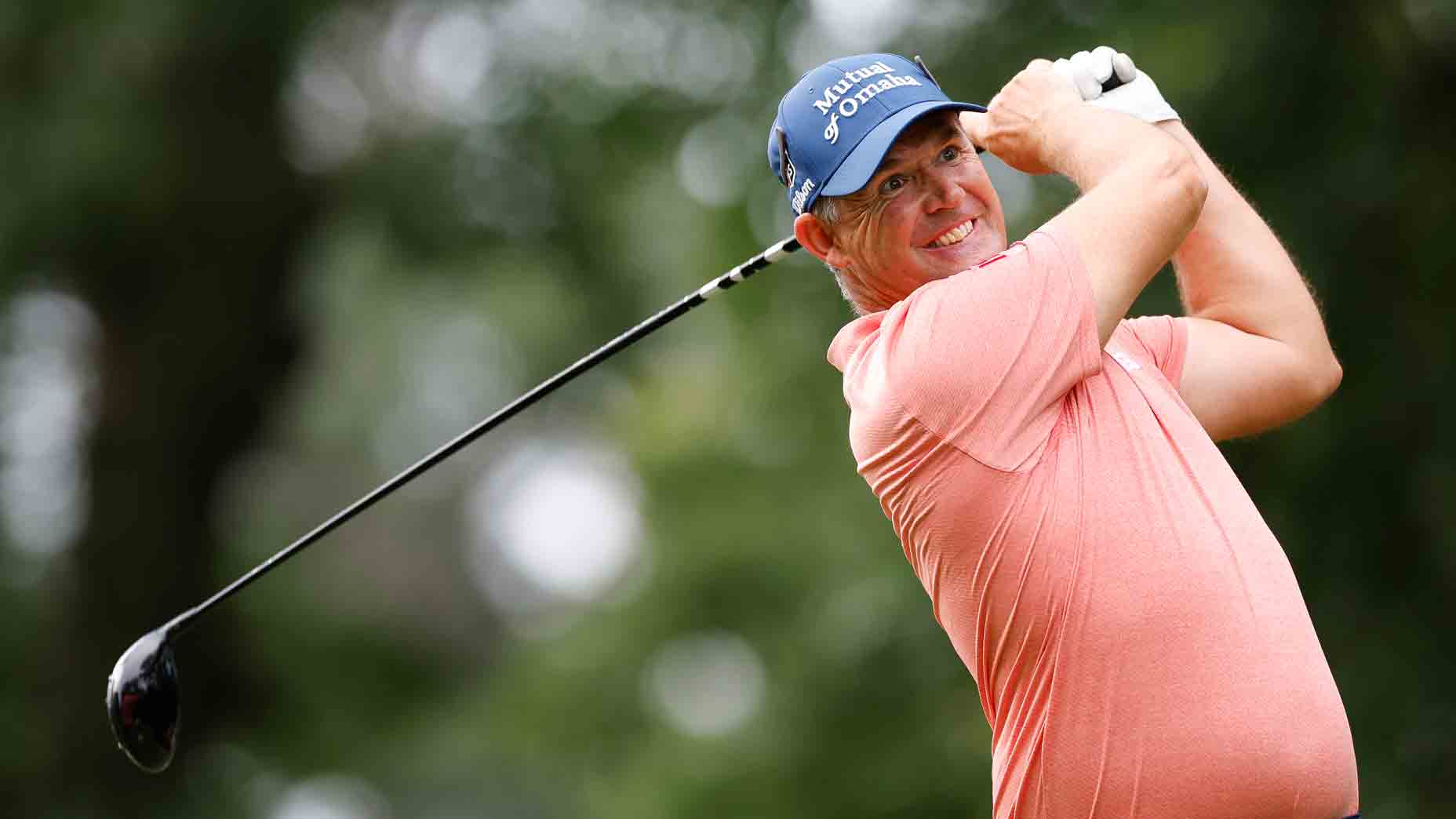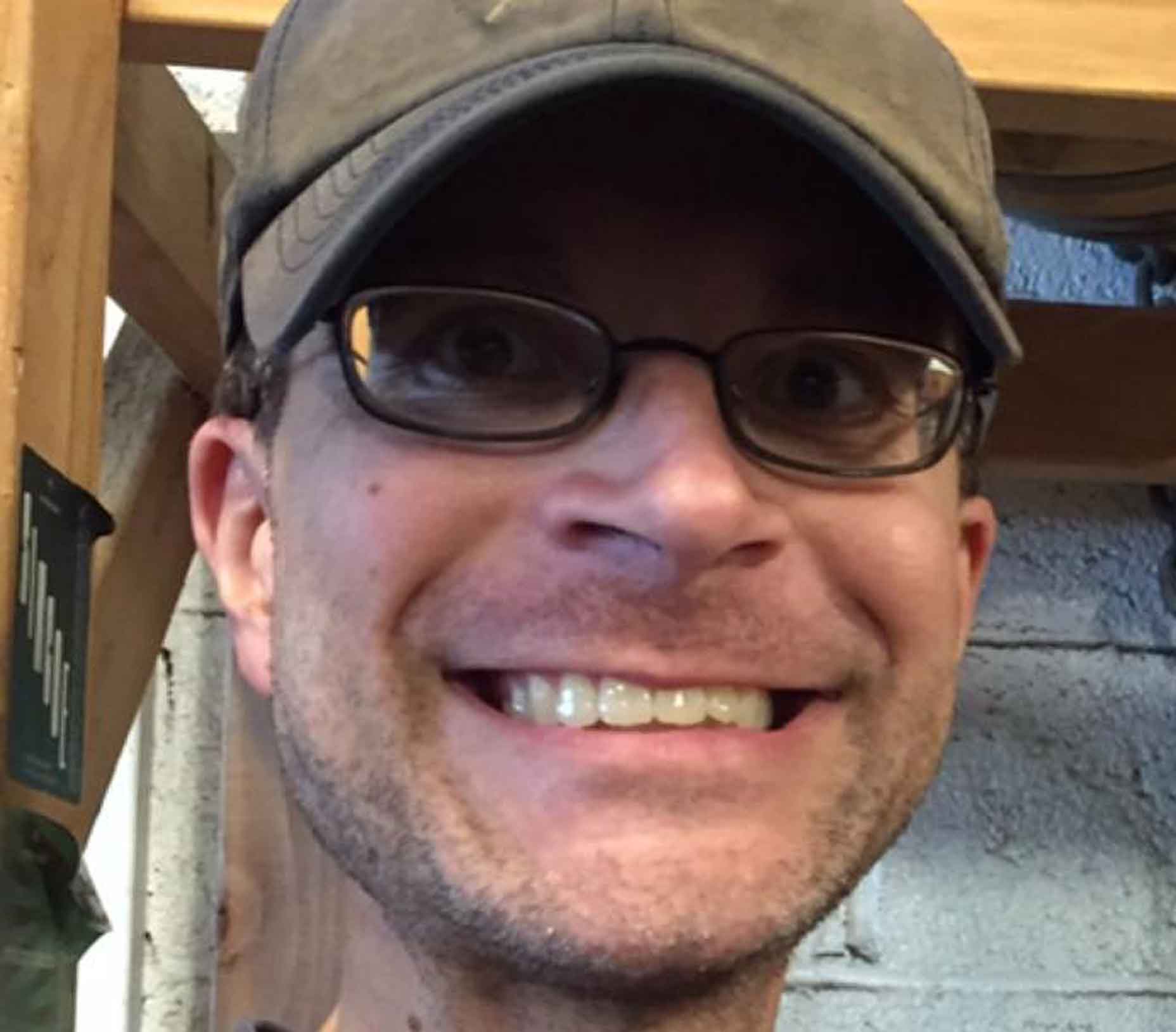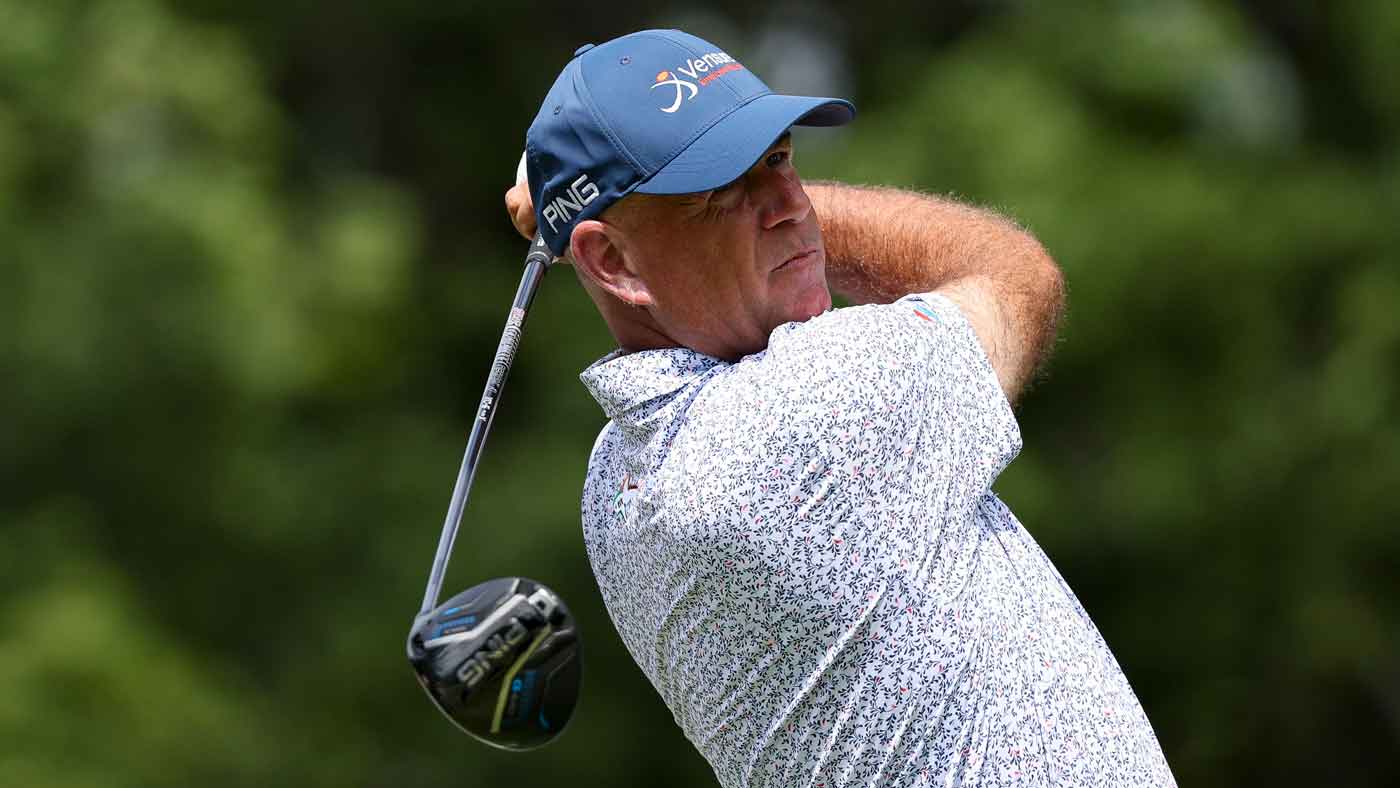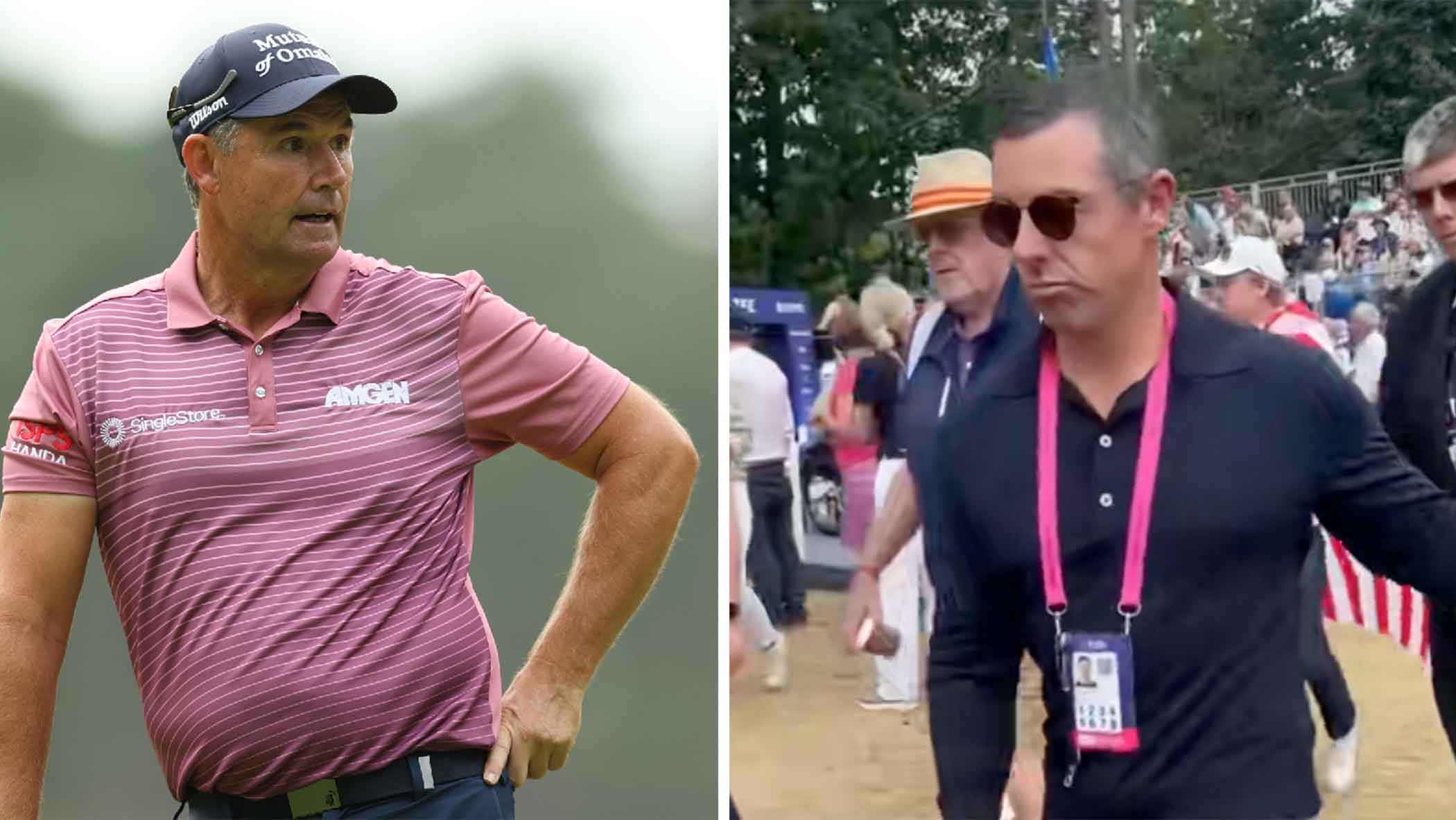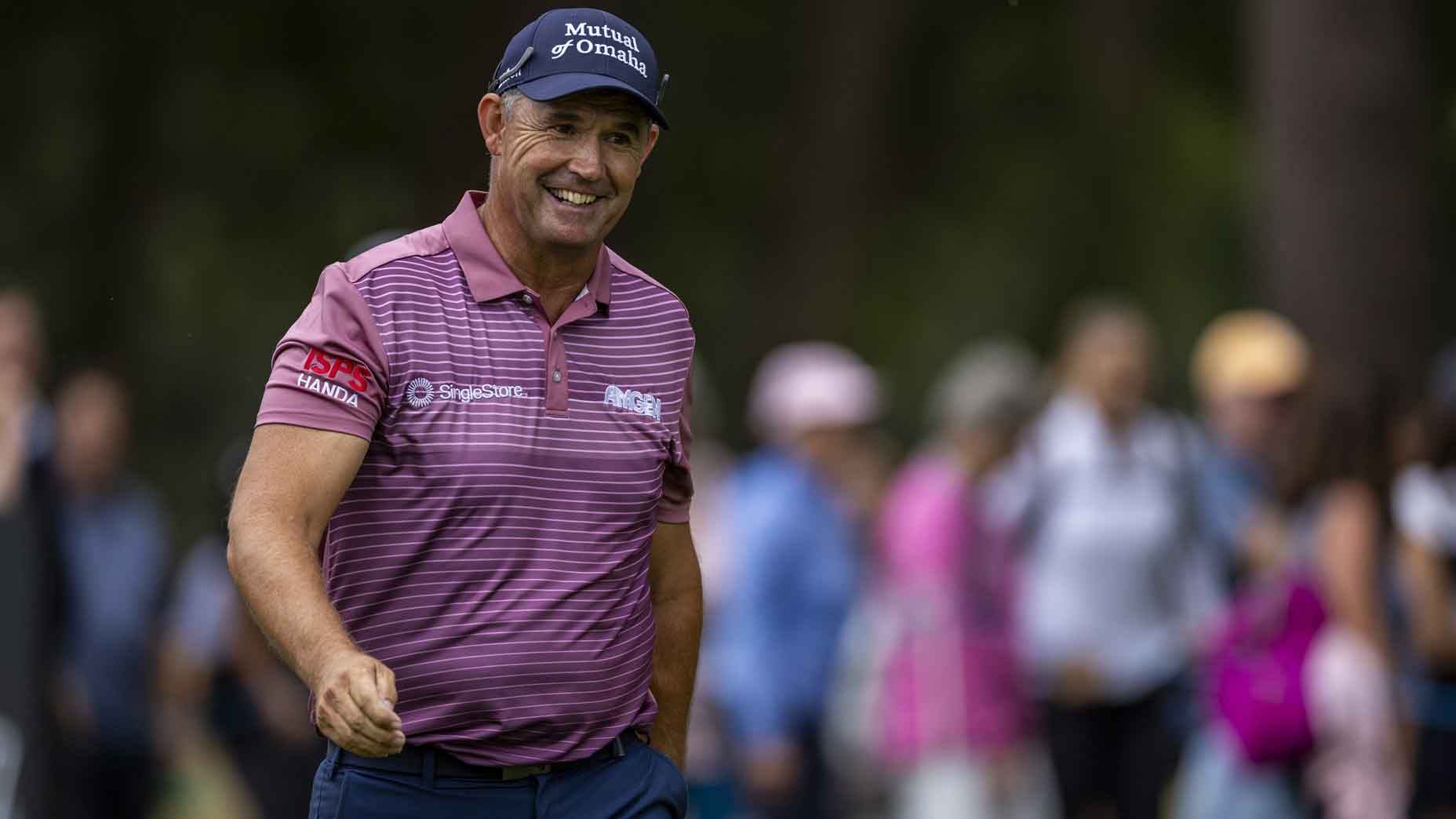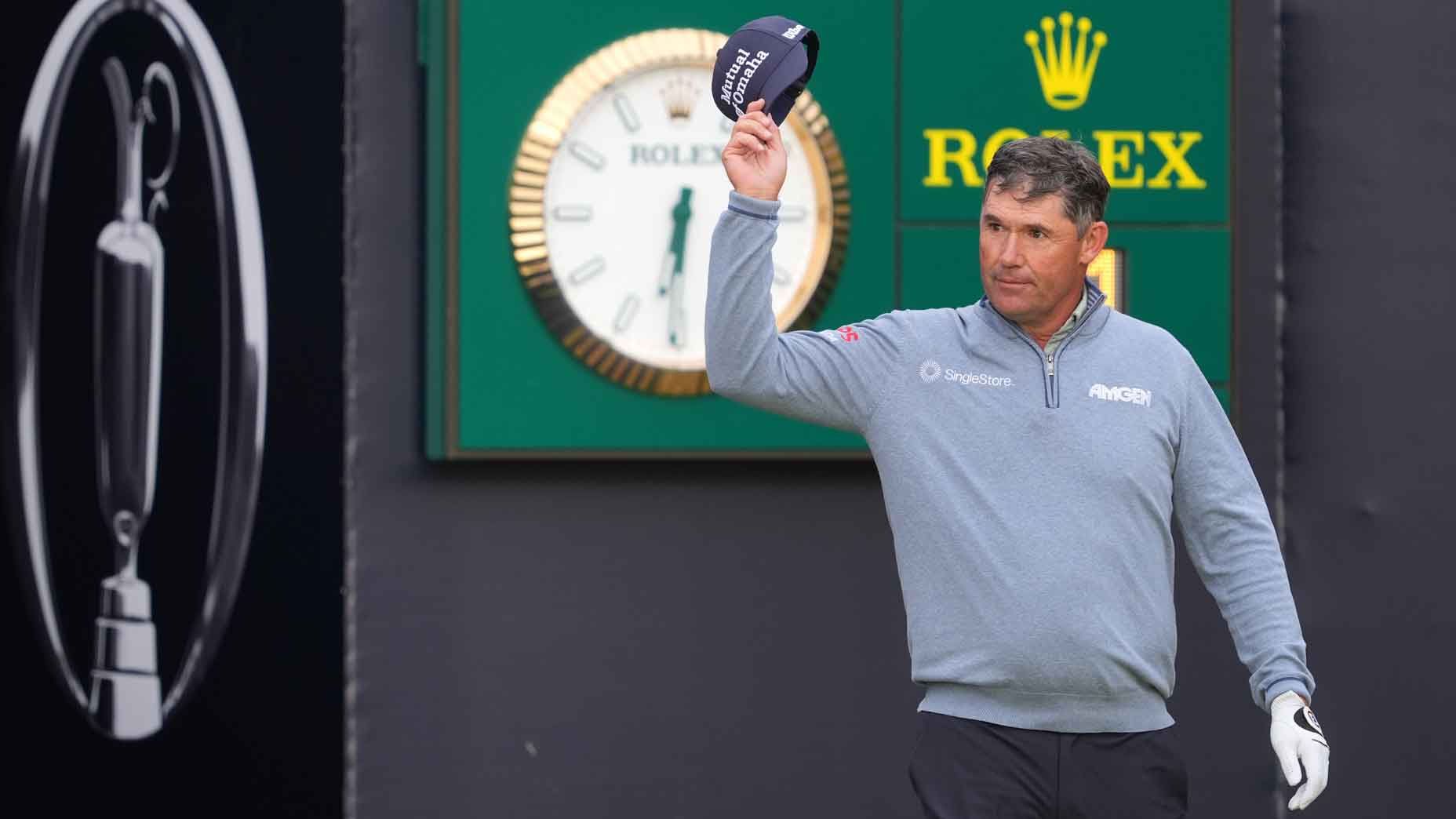Hook, Padraig Harrington says.
And hook and hook and hook some more.
“The biggest hook you can, like 20, 30, 40 yards of a hook, the worst-looking shot,” he says.
And that’s how amateurs can correct a slice, he believes.
And that’s how amateurs can also understand clubface control.
And that’s how amateurs can also learn this:
“There is no golf swing that stays the same,” Harrington said.
He was talking during a recently released episode of “The Rough Cut Golf Podcast” — which you can listen to in full here — and the slice subject is a popular one. Right-handed amateurs ship it right often (and lefties left). Amateurs also research the cure for it as if it were a disease. Just Google “how to fix a slice” and get ready to scroll and scroll.
Harrington’s thought, though, is somewhat simple.
Go left if you’re a righty. Go right if you’re a lefty.
“So most amateurs, say if you’re hitting a slice, they think, well, I want to learn how to hit this beautiful, straight or say a 5-yard draw,” Harrington said on the podcast. “Well, actually, if you’ve got a slice and you want to get rid of it, you’ve got to stay on the range and hit the biggest hook you can, like 20, 30, 40 yards of a hook, the worst-looking shot. And you’ve got to keep hitting that for a while.”
Over time, though, Harrington said, the players will start to hook the ball, which then requires range work in the opposite direction. On the range, the golfer should purposely try to slice the ball.
There are a pair of consequences.
3-time major winner has 3 tips — for ‘people who strike the ball badly’By: Nick Piastowski
Harrington thinks the player will learn clubface control. Notably, at a different point in the episode, he noted that understanding that is an issue for “people who strike the ball badly.” [Note: At the end of this story is a story written on that thought.]
“So for most amateurs,” Harrington said on the podcast, “they’d be better off going to the range and hitting a big hook and a big slice and the complete opposites every second shot, and then at least they’ll understand. And what shut face is and an open face. And as they get better, they can reduce how much they’re doing it. Whereas most people are going from a big slice to trying to get square face. And unfortunately, most amateurs do not know what a square face is. So they have some chance to know what a shut face and an open face is, but they’ve very little chance to know what a square face is.
“So you learn by doing the extremes.”
And eventually the ball will go left. Or right.
But just don’t expect things to stay that way, Harrington said.
Golf, right?
“It’s [the swing] never going to stay the same,” Harrington said on the podcast. “Don’t believe it ever will. It always — always in golf, you go from one to the other and you overdo it a little bit. OK, now stop that, go back, and hopefully the better you get, the less that moves, that it’s only a slight fraction of movement, but it will never stay the same for the rest of your life.
“There is no golf swing that stays the same.”
Editor’s note: To listen to the entire podcast with Harrington, please click here. And below is a story on another topic from the episode. The headline of that story is “3-time major winner has 3 tips — for ‘people who strike the ball badly.’”
* * *
You’re just swinging a stick, Padraig Harrington says.
Golf, the three-time major winner believes, shouldn’t be alien.
But then arms and legs and the head and the feet get involved, and the sport may as well be Martian. Harrington is sympathetic, though. His thoughts were actually part of his response to this frequently asked question:
“What would be one good word of advice you’d give for someone wanting to improve the game of golf?”
The query came during a recently released episode of “The Rough Cut Golf Podcast,” which you can listen to in full here, and Harrington’s answer featured two parts: advice for the “decent players,” and advice for “people who strike the ball badly.” The tip for the former group was one:
Commit to your routine.
If you focus on the target, focus on your target. If you focus on your takeaway, focus on your takeaway.
Then fire.
“Just stick to one thing,” Harrington said on the podcast, “make that decision before you step up to the ball and don’t add or change it. So if you decide I’m going to hit this 6-footer right lip, walk up, focus on the target — don’t start thinking, I’ve got to hit it softer or easier or harder, is it going to break more? You have to make a decision and stick to it.”
Then there’s the “strike the ball badly” gang.
They got three Harrington thoughts.
‘Movement’
This tip included Harrington’s points above — that golf shouldn’t be foreign. If you play other sports, try to relate golf to those sports.
“Generally, they’re not moving [in golf],” Harrington said on the podcast. “They’re trying to keep their feet still. Generally, they’re not moving. They’re trying to keep their head down. So I would say you’ve got to get a bit of movement in your game. And it’s very easy to go — there’s so many social media channels now that will show you. It really is — you got to move your feet, you got to do a lot of stepping drills. While you do want to keep an eye on the ball, you don’t want to keep your head down.
“Movement. Make it more natural. So yeah, I suppose this would be the thing I would say — if you play the sport, come to golf and play, do the exact same thing. Your hips and feet move the same as you would playing tennis. You know, your arms and torso move the same as if you’re skipping a stone — who hasn’t skipped a stone in water — and that’s a golf swing. So kind of try and think what you were good at and try and relate that to golf.”
On the podcast, host Peter Finch noted that he’s seen folks feeling restricted — and the thought was in their heads.
“Yeah, I think, unfortunately when people come to the game,” Harrington said on the podcast, “they think that they’re going to be able to hit every shot straight down the middle, and in that search, they hit everything perfect. They bring so much fear in that they start constraining things rather than going, I’m going to swing away, I’m going to see where the ball is going, and then I’m going to try and moderate that swing a little bit to control it.”
‘Amateurs don’t know where the ground is’
This tip simply focused on finding the turf.
“If I was teaching a beginner,” Harrington said on the podcast, “I probably wouldn’t let them hit a ball for a couple of months. That’s extreme. I let them chip and putt, but essentially, I’d get them swinging back and forth, I then get them hitting the ground.
“Amateurs don’t know where the ground is. You’ve got to be able to hit the ground. You’ve really got to be able to sort of clip the ground with your club.”
‘Face awareness’
The third tip examined controlling the clubface.
“I get them face awareness,” Harrington said on the podcast. “So that’s really short, really open so that they can start modifying that to a little open, a little short, but they have to get face awareness.
“And I think that’s something that’s — and you only get face awareness by hitting crooked shots, by hitting big hooks and big cuts. You don’t get them by hitting it straight. Stop trying to hit the ball straight. That’s going to happen three months down the road. It doesn’t start that way.”
